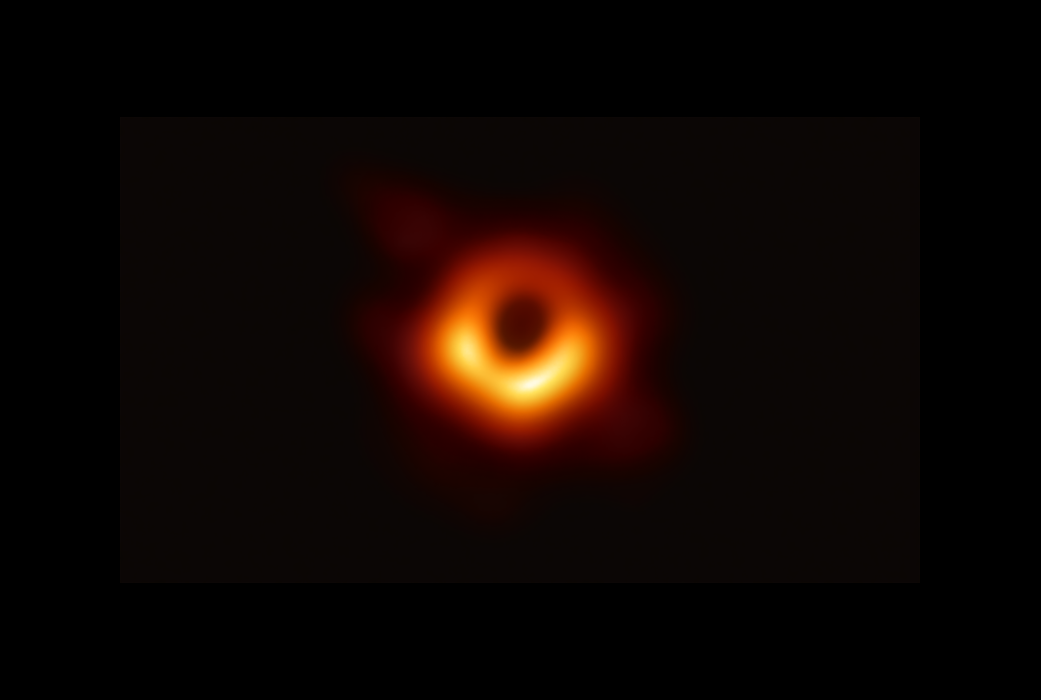In April 2019, a black hole and its shadow were captured in an image for the first time, a historic feat by an international network of radio telescopes called the Event Horizon Telescope (EHT). EHT is an international collaboration whose support in the U.S. includes the National Science Foundation.
A black hole is an extremely dense object from which no light can escape. Anything that comes within a black hole’s “event horizon,” its point of no return, will be consumed, never to re-emerge, because of the black hole’s unimaginably strong gravity. By its very nature, a black hole cannot be seen, but the hot disk of material that encircles it shines bright. Against a bright backdrop, such as this disk, a black hole appears to cast a shadow.
This stunning image shows the shadow of the supermassive black hole in the center of Messier 87 (M87), an elliptical galaxy some 55 million light-years from Earth. This black hole is 6.5 billion times the mass of the Sun. Catching its shadow involved eight ground-based radio telescopes around the globe, operating together as if they were one telescope the size of our entire planet.
To complement the EHT findings, several NASA spacecraft were part of a large effort, coordinated by the EHT’s Multiwavelength Working Group, to observe the black hole using different wavelengths of light. As part of this effort, NASA’s Chandra X-ray Observatory, Nuclear Spectroscopic Telescope Array (NuSTAR) and Neil Gehrels Swift Observatory space telescope missions, all attuned to different varieties of X-ray light, turned their gaze to the M87 black hole around the same time as the EHT in April 2017. NASA’s Fermi Gamma-ray Space Telescope was also watching for changes in gamma-ray light from M87 during the EHT observations.
Learn the basics about these strange cosmic objects.
Image Credit: Event Horizon Telescope collaboration et al.
2019年4月,一个被称为事件视界望远镜(EHT)的国际射电望远镜网络首次拍摄到一个黑洞及其阴影,这是一项历史性的壮举。EHT是一个国际合作项目,在美国得到了国家科学基金会的支持。
黑洞是一种密度极高的物体,任何光线都无法从黑洞中逃脱。由于黑洞有着难以想象的强大引力,任何进入黑洞的事件视界(其不可返回的点)内的东西都会被吞噬,永远不会再出现。就其本质而言,黑洞是看不见的,但围绕它的炽热物质盘却发出明亮的光芒。在明亮的背景下,比如这个圆盘,黑洞似乎投射出一个阴影。
这张令人惊叹的图片显示了梅西耶87 (M87)中心特大质量黑洞的阴影,这是一个距离地球5500万光年的椭圆星系。这个黑洞的质量是太阳的65亿倍。捕捉它的阴影需要全球8台地基射电望远镜的参与,它们一起工作,就好像是一个地球大小的望远镜。
为了补充EHT的发现,NASA的几个航天器参与了这项大型工作的一部分,由EHT的多波长工作组协调,使用不同波长的光来观察黑洞。作为这项工作的一部分,NASA的钱德拉X射线天文台、核光谱望远镜阵列(NuSTAR)和尼尔·格莱尔斯·斯威夫特天文台的太空望远镜任务都对不同种类的X射线光进行了调整,在2017年4月与EHT同步将目光转向了M87黑洞。NASA的费米伽马射线空间望远镜也在EHT观测期间观察M87的伽马射线光的变化。
图片来源:事件地平线望远镜合作等。







